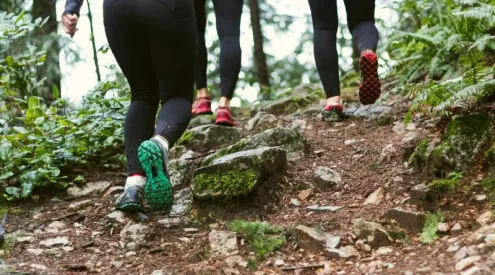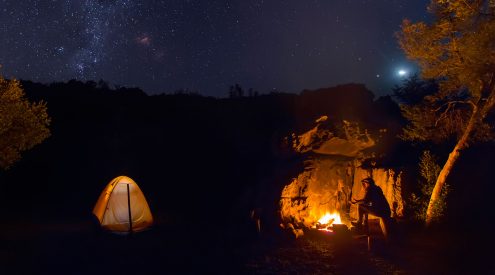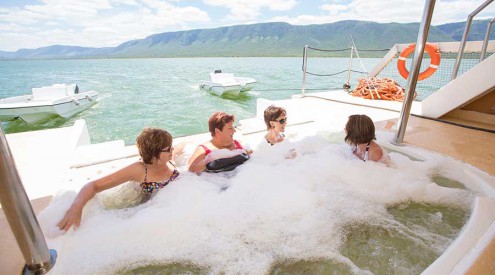I’m in the Kruger National Park on assignment for Getaway visiting all the campsites, lodges and accommodation options in the park. It’s a big job, but by the end of it I’ll have a list of all them (see them all here: Kruger accommodation reviews) and, more importantly, an idea of what you can expect to find there in terms of accommodation, food, amenities, animals, mobile reception and highlights. I just entered the northern region of the park and my first stop here is Olifants Rest Camp.
Olifants Rest Camp
As the very iconic Olifants River marks the divide between central and northern Kruger, it is safe to assume that life at Olifants Rest Camp revolves around this magnificent stretch of water. Even though the camp is small, it is situated in an area where three distinct vegetation types meet, namely: maroela, knobthorn acacia and mopani veld. The Lebombo Mountains, a much more rugged landscape, lies further to the east. The camp itself is situated on a hill, keeping it safe from floods, and allowing for some of the most beautiful views that I’ve enjoyed from the inside of a rest camp. Olifants is ideal for couples wanting to enjoy a quiet, and beautiful, bush break.
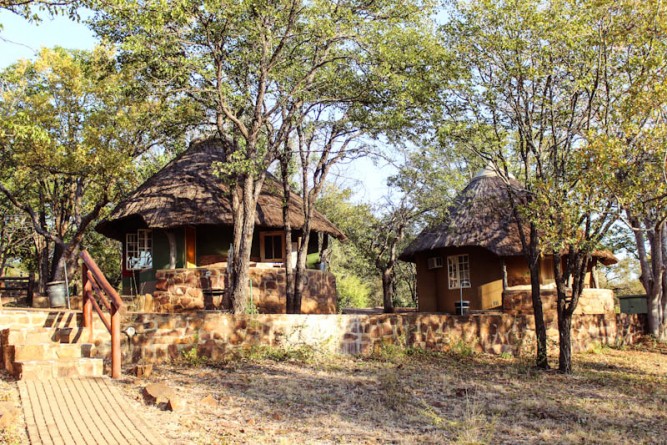
Bungalows are built in terraces at Olifants, so you’ll never feel like you’re disappearing behind your neighbour.
The accommodation at Olifants Rest Camp
Olifants Rest Camp itself only has self-catering chalets, staggered against the hill in the typical round fashion of the kruger, with a semi-circle, sheltered patio with a table and chairs. Some of the chalets have kitchenettes on the patio while others share kitchen facilities and have only a fridge. The fridges aren’t in cages, so beware of scavenging monkeys. All chalets have their own bathroom facilities. Olifants doesn’t have a swimming pool.
If you’re looking for a campsite, you can enjoy a quiet camping experience at the satellite caravan site, Balule, about 8km from Olifants on a dirt road. The bridge that crosses over the river to get to Balule is a historic feature, but the floods got to it and it’s currently closed for restoration. Camping at Balule takes you back to basics, as none of the sites have electricity points.
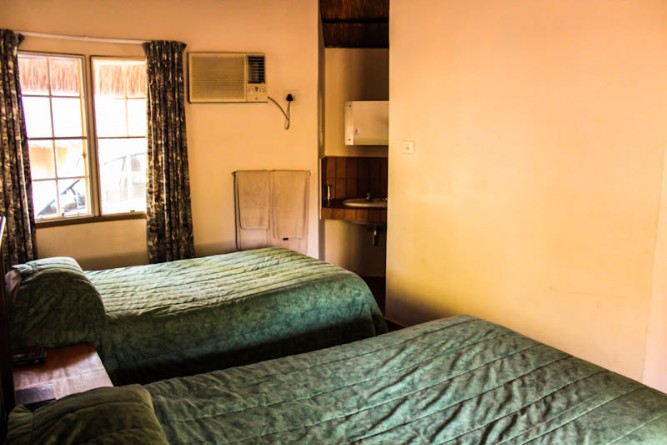
The inside of a bungalow at Olifants Rest Camp. These beds have broad frames, covered up by the duvets, so watch your shins.
The best spots
The camp is built for views and you’ll find that Olifants has many perimeter chalets, but not all of them are as close to the river as the others. Bungalows 1-14 and 106-111 definitely have the best river views. Other perimeter chalets are 16-24, situated high on a hill and overlooking miles and miles of bushveld, and 88-99, situated sort of to the side of the river. From here you can still see the river, but you’re a little further away.

A typical view from the river facing bungalows at Olifants.
The animals at Olifants Rest Camp
Owing to the variety of vegetation types, the animals in the area are quite diverse, but if you’re a bird lover, then Olifants is a definite must as it’s the best place to tick off the birds of prey. Around mid morning you can look out for vultures, Martial eagle and bateleur. There are some Pel’s fishing owls in the area and you can request to do a walk and see them. In winter, with the aloes in the camp are flowering, you can look out for nectarine birds like sunbirds and water birds are prolific around the river areas.
A third of the park’s hippos live in the Olifants and Letaba Rivers, so you’re guaranteed to spot them lazing away. Crocodile are also common and giraffe, kudu and other grazers favour the vegetation around the rivers. There is a pride of 12 lion in the area, so you might get lucky and see them and if you drive along the H1 heading north, you can look out for grysbok.
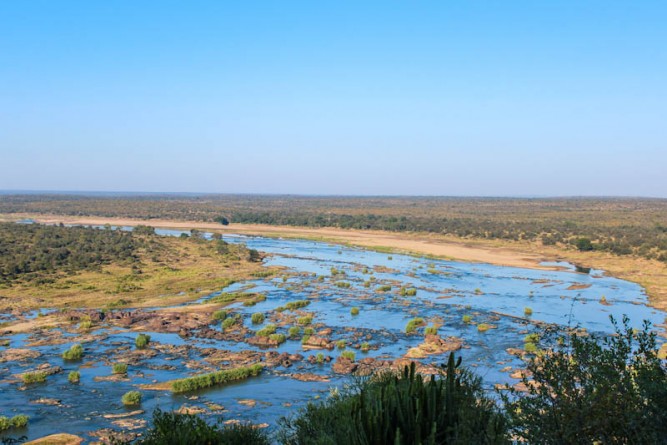
The view that you can enjoy at any time of day from the viewpoint inside the rest camp
The food
You can be sure to look out over the river while dining at Olifants, as the restaurant’s outside deck is situated quite high against the hill. You’ll find the standard Kruger menu here, so enjoy breakfasts, sandwiches, grills, pizzas and burgers or order them to take away at the canteen. The shop is rather small here, but you’ll find all the necessities for a nice braai and most people opt for this, especially in the evening.
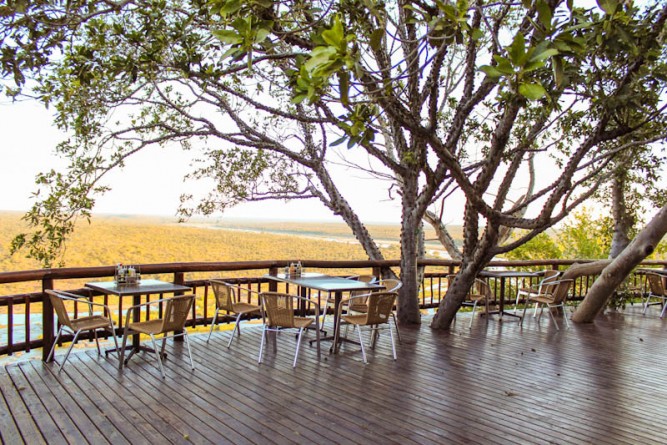
The large wooden deck that forms part of the restaurant has surprisingly little tables and chairs, and it’s no wonder they’re all dragged to the edge.
Highlights
The viewpoints in and around Olifants are all worth a visit. The viewpoint inside the camp is the most convenient, while two others in the area are Olifants Lookout (7km from camp) and N’wamanzi Lookout (9km from camp). All three boast sweeping views across the Olifants River.
The high level bridge that crosses the Olifants River, 6km south along the H1, stretches for 300m, high above the water. You can get out of your car around the middle section of the bridge and stand, suspended above the water, spotting birds and enjoying the views.
The activities at Olifants are quite special. They offer the standard drives, walks and braais, but they also offer mountain bike rides and river walks. The walks cater for any level of fitness. You’ll enjoy a leisurely amble along the Olifants, Letaba or Timbavati Rivers and you’ll definitely get to see crocodile and hippo.

The high level bridge and the view that you can enjoy from it across the Olifants River
Getting to Olifants Rest Camp
Olifants is quite remote. Orpen Gate is about 3 hour’s drive away and further to the north you’ll find Phalaborwa Gate, which is about 2.5 hour’s away.

A display inside the restaurant area shows a representation of the Olifants mini gorge
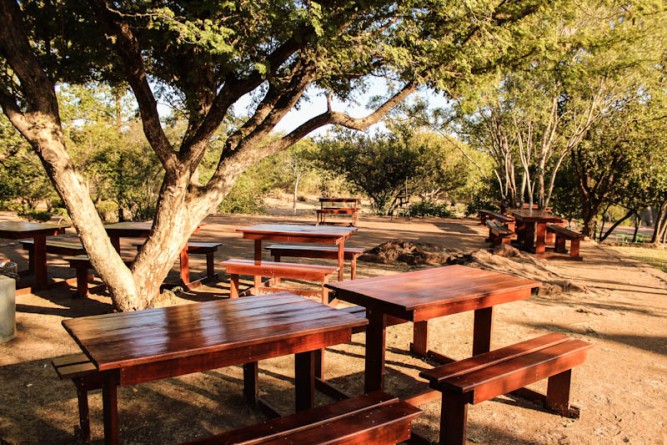
Day visitors at Olifants are welcome, and although the picnic spot is small, it has braais that you can use and lots of shade.
Nitty gritty
ATMs: No
Credit card facilities: Yes
Mobile reception: Great
Book a stay at Olifants Rest Camp
Find more accommodation in Kruger


